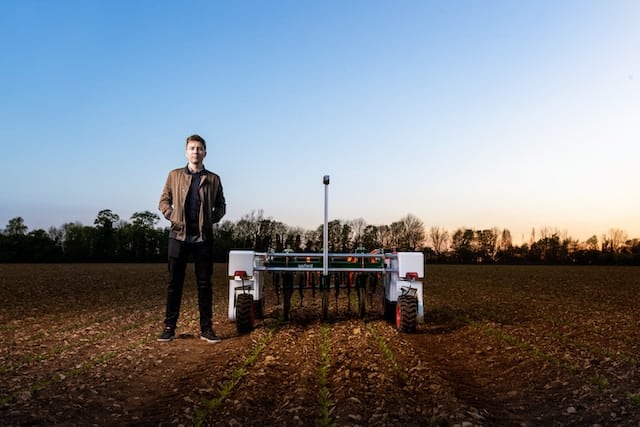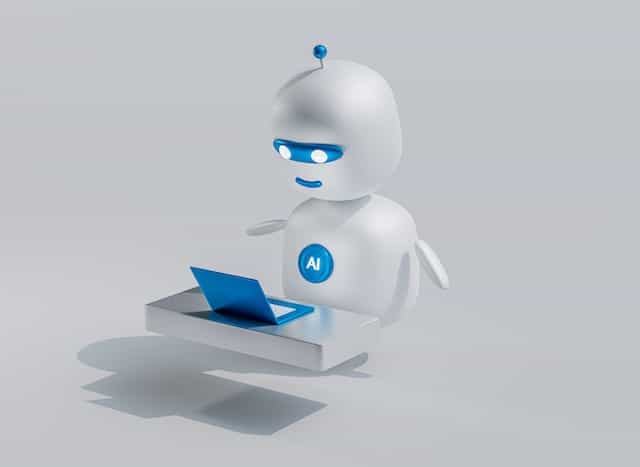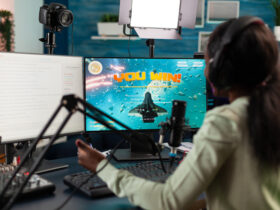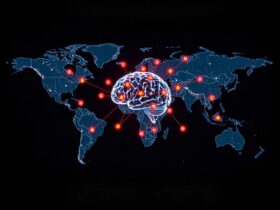Artificial intelligence, or AI, is all over the news and has captured the imaginations of humans for decades. The possibilities of AI seem endless and intriguing. As programmers and computer scientists continue to develop and improve existing AI technology, people around the world have started to wonder where we will go next. What many people don’t realize is all the many ways that artificial intelligence is already being used in our day-to-day lives, behind the scenes and without us noticing. Here are some unusual examples of how companies are using AI:
Customer Service
AI-powered chatbots are being used for customer service interactions, handling inquiries, providing support, and even performing automated tasks. These chatbots employ natural language and artificial intelligence learning to understand and respond to customer queries. While customer service chatbots and similar programs have been used in customer service applications for years, they are becoming more efficient, more helpful, and more adaptable. AI can also be used by instructional design services to help write and develop materials such as how-to guides, instruction manuals, and assembly instructions.
Fashion Design
AI is being used to generate unique and creative fashion designs. Fashion and data companies have collaborated on projects where AI algorithms analyze fashion trends, customer preferences, and existing designs to develop new clothing styles. While these predictive fashion designs can be helpful to jumpstart the creative process and evaluate the potential success of clothing styles, artificial intelligence isn’t yet designing clothes completely by itself. Instead, it helps to target the direction designers and fashion teams take their products.
Wildlife Conservation
Artificial intelligence can assist in wildlife conservation efforts by analyzing camera trap images and using the data to identify and track endangered species. It can also help evaluate and process data from a variety of other data sources including satellite images, tracking devices such as radio collars, and audio recordings. This technology helps researchers monitor animal populations, track migration patterns, and identify potential threats. It was even used by some game preserves to help stop poaching.
Writing and Research
AI has become a valuable and time-saving tool for writers. Not only can artificial intelligence learn to write moderately well, but it can also help check the grammar and writing style of human-created content, help design and plan outlines for complicated writing projects, and help with research. While most AI writing isn’t a finished product and will still need to be edited, re-written, and polished, it can greatly speed up the writing process and help writers and content creators get the more tedious aspects of writing out of the way.

Crop Management
Some agricultural companies are utilizing artificial intelligence to help them optimize crop management. AI-powered systems can perform tasks like analyzing soil data, weather patterns, and historical crop performance to provide recommendations on irrigation, fertilization, and pest control methods. These data-informed recommendations are helping companies to improve yields and reduce resource waste. More efficient, economical, and eco-friendly agriculture benefits everyone and AI can help farmers and agricultural companies achieve those goals.
Wine Production
Along with being used in agriculture in general, AI is being used in the wine industry specifically to help enhance vineyard management and wine production. AI algorithms can be used to analyze soil conditions, weather data, and grape characteristics to optimize planting strategies, harvest timing, and even the fermentation processes. These methods can help decrease costs and increase efficiency, leading to improved wine quality and saving money and resources. This is especially important in areas like California where resources such as water are becoming depleted.
Music Composition
Many people are surprised to find out that arts can be helped by AI processes. AI algorithms are being developed to help compose original music. Some companies have created platforms that use AI to generate royalty-free music tracks based on user inputs such as genre, tempo, and mood. This music can be used for things such as background tracks for videos and advertisements. And AI is even being used to help create more complicated music for artists. While computers aren’t creating whole songs yet and the human touch is still important in artistic creation, AI can help composers and artists with the creative process.

Hiring and Recruitment
The hiring process can be frustrating and time-consuming. Artificial intelligence is being utilized to automate candidate screening, analyze resumes, and help plan interviews. Algorithms can assess applicant qualifications, match them with job requirements, and even conduct video interviews with natural language processing capabilities. This is especially helpful in situations where companies receive more applications than they can easily process or read. AI can help human resources teams choose the most likely candidates to move through the hiring process or eliminate unqualified applicants.
Mental Health Support
AI-powered chatbots are being used for virtual mental health to provide support and therapy to patients undergoing treatment or care. These chatbots use natural language processing to engage in conversations, offer empathy, and provide resources and coping strategies to individuals in need. Some medical providers are concerned that AI-based chats and apps could potentially cause harm by glitching or saying the wrong thing during a crisis, or that they could become a replacement for human-based therapy and human contact. Others are more optimistic, hoping AI will help their patients become more independent and save money while receiving the support and treatment they need more consistency.
Energy Management
Energy management and resource conservation has become an important topic. AI helps companies optimize energy consumption and reduce costs. Smart building systems equipped with AI algorithms can analyze energy usage patterns, environmental conditions, and occupancy levels to regulate heating, cooling, and lighting which can help maximize efficiency. AI can also help energy producers and companies make intelligent, data-driven choices about energy production.
Art Creation
Another way that AI is being used to inspire creativity and help humans is by creating art. AI algorithms are capable of generating unique artworks, paintings, and sculptures. Artists and companies are experimenting with AI-generated art to explore new creative possibilities and challenge traditional artistic boundaries. Most people aren’t expecting AI-generated art to be a finished product, but are instead using it as a source of inspiration, creative channeling, and a way to speed up the creative process.
Conclusion
While AI is still in the beginning stages and there is much to be learned and understood about how it will work and what it will eventually be able to do, it is already being used for many different applications. AI can learn and adjust in ways traditional computers can’t, allowing it to make decisions and be used for intricate processes that other computers aren’t well suited to do. Because it can learn from its mistakes, AI is constantly improving and getting better at what it does. Many people are worried about what this could mean for humans in the future, while others are excited to see where this expanding technology takes us.













Leave a Reply